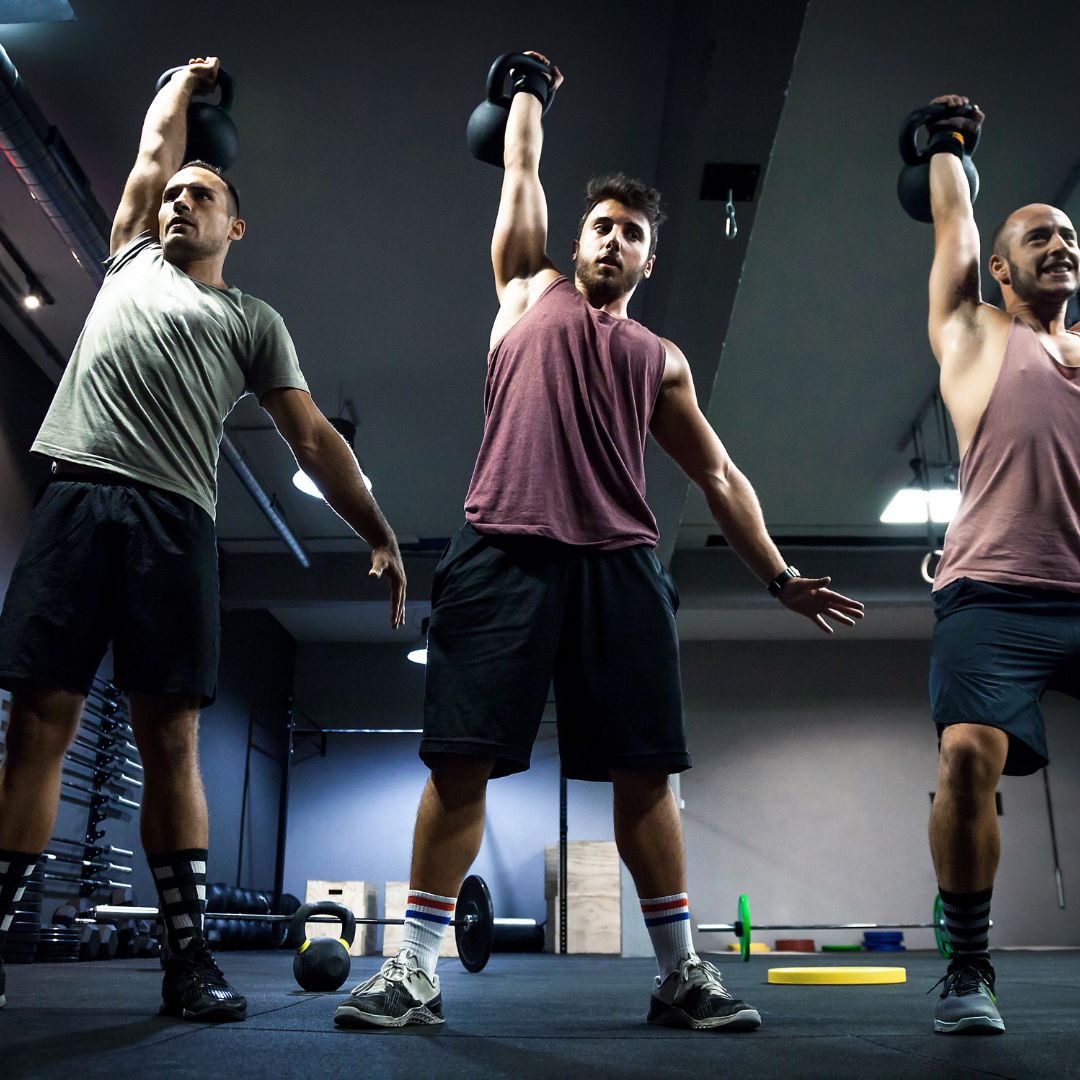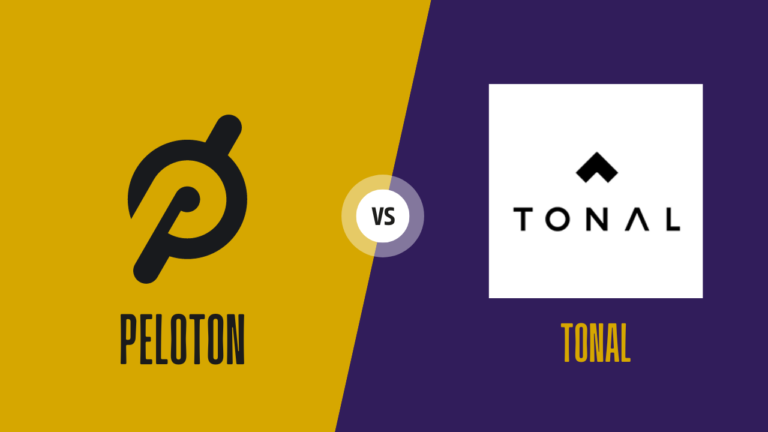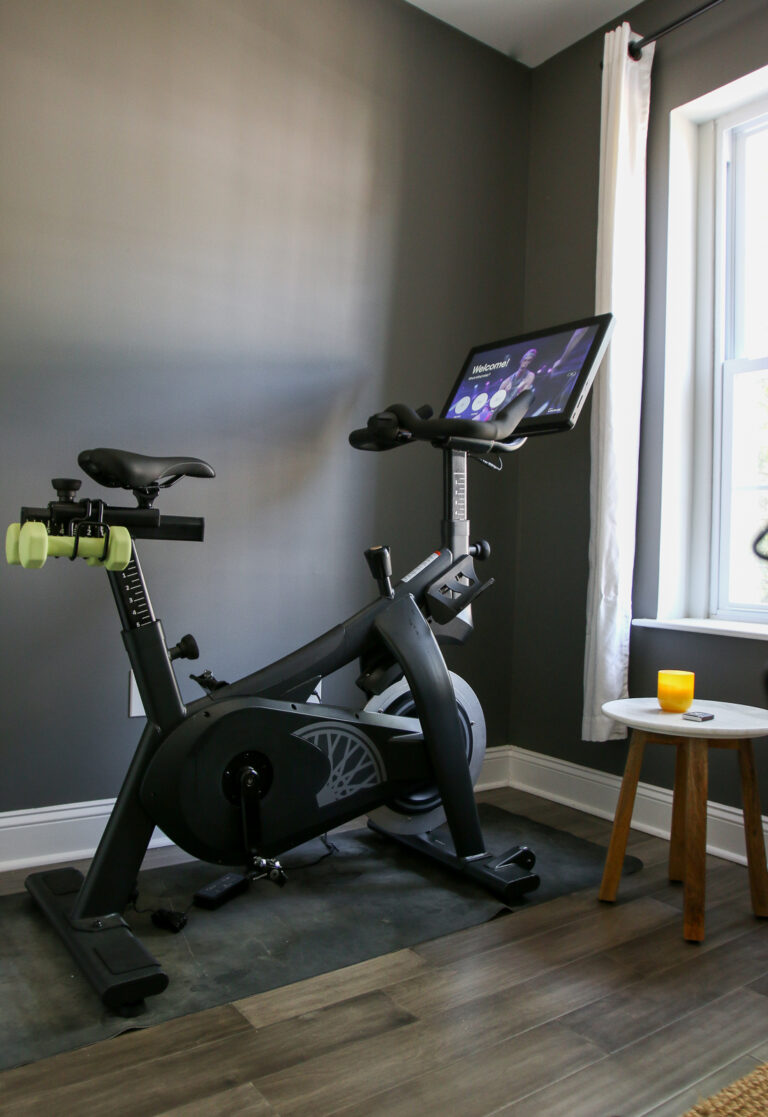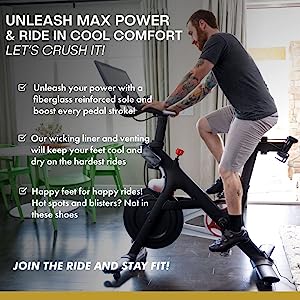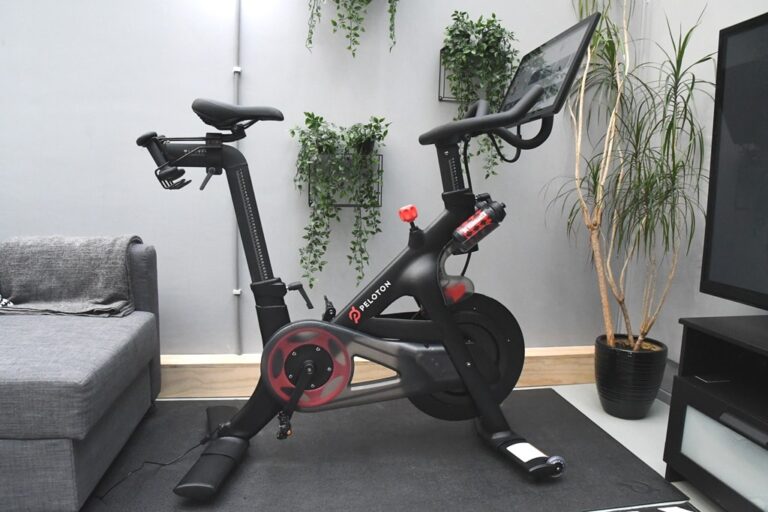Peloton Vs Weight Lifting: Unleashing the Ultimate Fitness Battle
Peloton and weightlifting are two popular forms of exercise with distinct benefits and focus.

Credit: www.aliveandfit.ca
The Popularity Contest: Peloton Vs Weight Lifting
Discover the battle between Peloton and weight lifting in this popularity contest. Uncover the differences, benefits, and considerations when choosing one exercise regimen over the other. Make an informed decision and enjoy the fitness journey ahead.
The Fitness Landscape: How Peloton And Weight Lifting Are Dominating The Industry
The world of fitness has seen a major shift in recent years, with more and more people opting for home workouts and virtual fitness classes. Two popular options that have taken the industry by storm are Peloton and weight lifting.
Let’s delve into the popularity contest between these two fitness trends and explore how they are dominating the fitness landscape:
- Peloton:
- Peloton has gained immense popularity due to its unique approach to indoor cycling. With their state-of-the-art stationary bikes and extensive library of on-demand and live cycling classes, Peloton has become a household name in the fitness world.
- Peloton offers a holistic fitness experience, combining the benefits of cardiovascular exercise, strength training, and community support. Riders can track their progress, compete with others, and even participate in virtual group workouts.
- The convenience of Peloton’s at-home setup, along with the interactive and immersive workouts, has attracted fitness enthusiasts of all levels. It is particularly appealing for individuals who prefer the comfort and privacy of exercising in their own space.
- Weight Lifting:
- Weight lifting, on the other hand, has been a long-standing pillar of the fitness industry. It involves using free weights or weight machines to build strength and tone muscles.
- Weight lifting offers numerous benefits, including increased muscle mass, improved bone density, enhanced metabolism, and better overall fitness. It allows individuals to target specific muscle groups and customize their workouts based on their goals.
- The popularity of weight lifting has soared in recent years, with more people realizing the benefits of resistance training for both physical and mental well-being. It appeals to individuals who enjoy the challenge of pushing their limits and achieving personal strength milestones.
While Peloton and weight lifting are distinct fitness approaches, both have massive followings and hold significant influence in the fitness landscape. The cultural shift towards home workouts and virtual fitness classes has amplified their popularity, allowing individuals to prioritize their fitness goals from the comfort of their own homes.
Whether you prefer the energizing and interactive nature of Peloton or the discipline and empowerment of weight lifting, both options offer effective ways to achieve personal fitness goals.
The Pros And Cons: Peloton And Weight Lifting Unveiled
Peloton and weight lifting have their pros and cons. Peloton offers convenience and a variety of workouts, while weight lifting builds strength and muscle mass. Which one is right for you depends on your preferences and fitness goals. Choose wisely!
When it comes to fitness, everyone has their own preferences. Some people thrive on the intensity and challenge of weight lifting, while others prefer the convenience and variety of workouts offered by Peloton. We will take a closer look at the pros and cons of both Peloton and weight lifting to help you determine which option might be the best fit for you.
Benefits Of Peloton: Convenience, Variety Of Workouts, And Community Engagement
- Convenience: With Peloton, you can work out from the comfort of your own home, eliminating the need to travel to a gym or fitness class. This convenience is particularly valuable for those with busy schedules or limited access to fitness facilities.
- Variety of workouts: Peloton offers a wide range of workout programs, including cycling, running, strength training, yoga, and more. This variety allows you to switch up your routine and prevent boredom, making it easier to stay motivated and committed to your fitness goals.
- Community engagement: Peloton provides a unique online community where you can connect with other members, join virtual fitness challenges, and receive encouragement from instructors and fellow participants. This sense of community can be motivating and make your fitness journey feel more enjoyable and connected.
Advantages Of Weight Lifting: Building Strength, Muscle Development, And Overall Fitness
- Building strength: Weight lifting is known for its ability to help build and tone muscles, making it an ideal choice for those looking to increase their overall strength. Regular weight lifting sessions can lead to improved muscle definition and increased functional strength.
- Muscle development: Weight lifting allows for targeted muscle development, allowing you to shape and sculpt your physique according to your desired aesthetic goals. It is also an effective way to improve bone density and prevent age-related muscle loss.
- Overall fitness: In addition to building strength, weight lifting can contribute to overall fitness by improving cardiovascular health, boosting metabolism, and enhancing endurance. It can also help with weight management and increase your body’s calorie-burning potential.
Drawbacks Of Peloton: Cost, Limited Exercise Options, And Lack Of Personalized Training
- Cost: While Peloton offers the convenience of at-home workouts, it does come with a significant upfront cost. Buying a Peloton bike or treadmill can be a substantial investment, along with the monthly subscription fee. This cost may be prohibitive for some individuals.
- Limited exercise options: While Peloton offers a variety of workouts, it may not cater to every fitness preference or goal. If you enjoy a wide range of activities or specific training methods, you may find the options on Peloton limited in comparison to a traditional gym or exercise facility.
- Lack of personalized training: While Peloton instructors provide guidance and motivation during workouts, they are not able to provide individualized training based on your specific needs or fitness level. This lack of personalized attention may not be suitable for those who require more tailored training to meet their goals or have specific limitations or injuries.
Disadvantages Of Weight Lifting: Learning Curve, Potential For Injuries, And Time Commitment
- Learning curve: Weight lifting requires proper form and technique to maximize results and minimize the risk of injury. It may take time and practice to master these techniques and ensure you are performing exercises correctly.
- Potential for injuries: As with any physical activity, there is a risk of injuries associated with weight lifting. Poor form, pushing beyond your limits, or not using proper equipment can increase the likelihood of injury. It is important to prioritize safety and gradually increase intensity to minimize the risk of harm.
- Time commitment: Weight lifting typically involves longer workout sessions to adequately target specific muscle groups and allow for sufficient rest between sets. This time commitment may be challenging for individuals with busy schedules or limited time for exercise.
Both Peloton and weight lifting offer unique benefits and drawbacks. Peloton provides convenience, workout variety, and a sense of community, while weight lifting focuses on building strength, muscle development, and overall fitness. Consider your personal preferences, goals, and lifestyle when deciding which option aligns best with your needs.
Remember to prioritize safety and consult with a fitness professional before starting any new exercise routine.
Assessing Your Fitness Goals
Assessing your fitness goals? Wondering which is better, Peloton or weight lifting? Explore the pros and cons of both to make an informed decision for your fitness journey.
Are you torn between hopping on a Peloton bike or hitting the weightlifting room at the gym? Assessing your fitness goals is the crucial first step in determining which exercise routine is right for you. Whether you aim to lose weight, improve cardiovascular health, or gain muscle, understanding your objectives is key.
Let’s delve into each category and identify the fitness routines that align best with your goals.
Understanding Your Objectives: Weight Loss, Cardiovascular Health, Muscle Gain, Etc.
- Weight loss:
- Shed those unwanted pounds by incorporating a calorie-burning routine into your fitness regimen.
- Focus on exercises that increase heart rate, such as aerobic activities and high-intensity interval training (HIIT).
- Combine cardiovascular exercises with strength training for optimal results.
- Cardiovascular health:
- Prioritize exercises that elevate heart rate and improve overall cardiovascular endurance.
- Engage in activities that strengthen your heart and lungs, such as running, swimming, cycling, or rowing.
- Implement interval training to challenge your cardiovascular system and improve stamina.
- Muscle gain:
- To pack on lean muscle mass, emphasize strength training exercises.
- Incorporate compound movements such as squats, deadlifts, bench presses, and shoulder presses.
- Lift progressively heavier weights to stimulate muscle growth.
- Overall fitness:
- If you seek well-rounded fitness, a balanced approach is key.
- Combine cardiovascular exercises like running or cycling with strength training exercises to achieve a holistic fitness routine.
- Engage in activities that challenge different muscle groups and elevate heart rate simultaneously.
Remember, your fitness goals will determine the best approach to achieving your desired results. Identifying your objectives upfront will guide you toward the most suitable exercise routine. So, let’s dive in and align your fitness goals with the Peloton or weightlifting routine that’s perfect for you.
Evaluating Your Lifestyle And Preferences
Choosing between Peloton and weight lifting involves evaluating your lifestyle and preferences. Consider factors such as convenience, variety, and personal goals to make an informed decision.
When it comes to choosing between Peloton and weight lifting, it’s important to consider your lifestyle and preferences. Your workout routine should align with your needs and goals, ensuring that it not only keeps you motivated but also fits well into your daily life.
Here are a few key factors to consider:
Time Availability And Scheduling Flexibility
- Busy schedule: If you have a hectic lifestyle with limited time, Peloton might be the ideal choice. With on-demand classes available at any time, you can squeeze in a workout whenever it works for you.
- Strict routine: If you thrive on a consistent workout schedule, weight lifting allows you to establish a set routine and stick to it. You can plan specific days and times for your weight lifting sessions and create a structured fitness routine.
Solo Vs Group Workouts: Which Environment Motivates You The Most?
- Motivation in solitude: If you enjoy working out alone and find motivation within yourself, weight lifting can provide a focused and individualistic approach to your fitness journey.
- Group dynamics: If you thrive on the energy and support of others, Peloton offers a virtual community. From live classes to leaderboard challenges, you can engage with fellow Peloton users, creating a sense of camaraderie and inspiration.
Considering Your Budget And Equipment Accessibility
- Financial considerations: If budget is a concern, weight lifting may be more cost-effective. You can start with basic equipment like dumbbells or resistance bands, and gradually build your home gym setup as your progress.
- Investment in equipment: Peloton requires an initial investment in their stationary bike or treadmill, along with a monthly subscription fee. However, this comprehensive fitness platform provides access to a wide variety of workouts and a convenient home workout solution.
By evaluating your lifestyle and preferences, you can make an informed decision between Peloton and weight lifting. Understanding your time availability, preferred workout environment, and financial considerations will help you choose the approach that best suits your needs. So, assess your priorities and embark on a fitness journey that aligns with your unique requirements and goals.
Personalizing Your Fitness Journey
Embark on a personalized fitness journey by comparing Peloton and weight lifting. Discover the benefits of each exercise and choose the one that suits your goals and preferences.
When it comes to your fitness journey, it’s important to tailor your workouts to match your preferences and fitness level. Personalization not only helps you stay motivated, but it also ensures that you’re making progress towards your goals. Here are some key aspects to consider when customizing your fitness routine:
Tailoring Workouts To Match Your Preferences And Fitness Level:
- Understand your fitness goals: Before starting any fitness routine, it’s essential to identify what you want to achieve. Whether it’s weight loss, muscle gain, or improved cardiovascular health, knowing your goals will help you choose the right exercises.
- Assess your fitness level: Taking into account your current fitness level will help you determine the appropriate intensity and type of exercises to include in your workouts. It’s crucial to start at a level that challenges you but is still manageable.
- Choose exercises you enjoy: Incorporating activities that you find enjoyable increases the likelihood of sticking to your routine in the long run. Whether it’s cycling, weight lifting, or a combination of both, find activities that resonate with you.
- Experiment with different workouts: Don’t be afraid to try new things and explore different fitness routines. This will not only keep your workouts fresh and exciting but also help you discover what works best for you.
Adapting Exercises To Accommodate Injuries Or Physical Limitations:
- Listen to your body: It’s essential to pay attention to any discomfort or pain during your workouts. If you have a pre-existing injury or physical limitation, modify or substitute exercises to avoid exacerbating the issue.
- Seek guidance from professionals: If you’re unsure how to adapt exercises to accommodate injuries or physical limitations, consult with a qualified fitness trainer or physical therapist. They can provide you with appropriate modifications and alternative exercises.
- Focus on proper form and technique: As you adapt exercises, it’s crucial to prioritize maintaining proper form and technique. This helps to ensure that you’re targeting the intended muscles while minimizing the risk of further injury.
The Importance Of Variety And Progression In Maintaining Long-Term Motivation:
- Embrace variety: Performing the same exercises day after day can lead to boredom and stagnation. Incorporating a variety of exercises, whether it’s trying new fitness classes or incorporating different training modalities, keeps you engaged and motivated.
- Gradual progression: To maintain long-term motivation, it’s important to gradually increase the intensity, duration, or difficulty of your workouts. This helps to challenge your body and prevent plateaus in your progress.
- Set achievable goals: Breaking down your long-term fitness goals into smaller, attainable milestones fuels motivation and provides a sense of achievement along the way. Celebrate your progress and adjust your goals as needed.
Remember, personalizing your fitness journey is all about finding what works best for you. By tailoring your workouts to match your preferences and fitness level, adapting exercises to accommodate injuries or physical limitations, and embracing variety and progression, you can build a sustainable and enjoyable fitness routine.
Breaking Down The Peloton Experience
Discover the differences between Peloton and weight lifting, and how they both contribute to a rewarding fitness journey. Gain insights on which option aligns best with your fitness goals and lifestyle. Trust your body to make the right choice.
Imagine having access to a world-class workout experience right in the comfort of your own home. That’s exactly what the Peloton fitness platform offers. Whether you’re an enthusiastic cyclist or a dedicated weightlifter, Peloton provides a unique and engaging exercise routine that combines cutting-edge technology, motivational instructors, and a vibrant online community.
In this section, we will dive into the key elements that make up the Peloton experience, including the features of their bike and treadmill, the options for on-demand and live classes, the role of instructors in motivating and engaging users, and the interactive user experience and community.
Let’s begin exploring the Peloton world.
Peloton Bike And Treadmill: Features, Technology, And Workout Options
- Peloton Bike:
- State-of-the-art indoor cycling bike designed to simulate the feeling of riding outdoors.
- Features a high-definition touchscreen display that streams live and on-demand cycling classes.
- Customizable resistance levels to accommodate all fitness levels.
- Wide variety of workout options, including endurance rides, interval training, and scenic rides.
- Integration with heart rate monitors and other fitness tracking devices.
- Peloton Treadmill:
- Cutting-edge treadmill designed for runners of all levels.
- Equipped with a large touchscreen display offering access to live and on-demand running classes.
- Innovative cushioning system minimizes impact on joints, providing a comfortable running experience.
- Various workout types available, including sprints, interval training, and incline runs.
- Ability to track speed, distance, and heart rate for personalized training.
On-Demand Vs Live Classes: Advantages And Disadvantages
On-demand Classes:
- Flexibility to exercise at any time, fitting into your schedule.
- Wide selection of pre-recorded workouts to choose from.
- Ability to pause, rewind, or repeat classes to suit individual needs.
- Limited personal interaction with instructors and other users.
Live Classes:
- Real-time interaction with instructors and fellow users, creating a sense of community.
- Motivational aspect of participating in a live workout session together.
- Opportunities for instructor feedback and personalized shoutouts during live classes.
- Less flexibility in scheduling as classes are at specific times.
Peloton Instructors And Their Role In Motivation And Engagement
- Highly skilled and charismatic instructors guide users through each class, providing motivation and guidance.
- Instructors play a vital role in creating an engaging and immersive fitness experience.
- Each instructor has their own unique teaching style, appealing to different preferences.
- Instructors offer modifications and challenges to accommodate various fitness levels.
- They cultivate a sense of community and connection among users, encouraging participation and support.
User Experience And Community Interactivity
- Peloton’s user-friendly interface makes it easy to navigate and select desired classes.
- Classes are typically accompanied by curated playlists, enhancing the workout experience.
- Users can interact with each other through features such as leaderboards, high-fives, and challenges.
- The ability to follow and engage with other Peloton members fosters a supportive and motivating community.
- Opportunities for achievement recognition and virtual badges further enhance user engagement.
The Peloton experience offers a comprehensive and dynamic fitness journey, supported by state-of-the-art equipment, motivating instructors, and a vibrant community. Whether you prefer the intensity of weightlifting or the endorphin rush of cardio workouts, Peloton caters to a wide range of fitness enthusiasts.
So, gear up, sweat it out, and immerse yourself in the Peloton experience from the comfort of your own home.
Unleashing The Power Of Weight Lifting
Discover the ultimate battle between Peloton and weight lifting, unlocking the true potential of your fitness journey. Experience the power of challenging your limits and achieving transformative results with weight lifting.
Weight lifting is a powerful form of exercise that can help you achieve your fitness goals, build strength, and improve your overall health. Whether you’re a beginner or a seasoned gym-goer, weight lifting has something to offer everyone. In this section, we will explore the different types of weight lifting exercises, the importance of proper form and technique, and how to design effective weightlifting programs for different fitness goals.
Different Types Of Weight Lifting: Free Weights, Machines, Bodyweight Exercises
Weight lifting encompasses a variety of exercises that can be categorized into three main types: free weights, machines, and bodyweight exercises.
- Free weights: These exercises involve the use of dumbbells, barbells, or kettlebells. They allow for a wider range of motion and engage more muscles, helping to improve stability and coordination.
- Machines: Weight lifting machines provide a guided path of motion, making them ideal for beginners or individuals with specific needs or limitations. They target specific muscles and are often adjustable to accommodate various body types.
- Bodyweight exercises: These exercises use your body’s own weight as resistance, such as push-ups, squats, and lunges. They require little to no equipment and can be done anywhere, making them a convenient option for those who prefer to work out at home or while traveling.
Form And Technique: Importance Of Proper Execution And Avoiding Injuries
Proper form and technique are crucial when it comes to weightlifting. It ensures optimal muscle activation, minimizes the risk of injuries, and maximizes the effectiveness of each exercise. Here are some important points to keep in mind:
- Maintain a neutral spine: Keep your spine in a neutral position, avoiding excessive arching or rounding of the back. This provides stability and reduces the risk of back injuries.
- Engage your core: Activate your core muscles by drawing your belly button towards your spine. This helps to stabilize your body and protect your lower back.
- Start with lighter weights: Begin with a weight that allows you to maintain proper form throughout the exercise. Gradually increase the weight as your strength and technique improve.
- Control the movement: Focus on smooth, controlled movements rather than relying on momentum. This ensures that the targeted muscles are being fully engaged and reduces the risk of joint strain.
- Seek guidance: If you’re new to weight lifting or unsure about proper form, consider working with a qualified fitness professional who can provide guidance and help you develop good lifting habits.
Designing Effective Weightlifting Programs For Different Fitness Goals
To get the most out of your weight lifting workouts, it’s important to design a program that aligns with your specific fitness goals. Here are some factors to consider:
- Set clear goals: Determine what you want to achieve through weight lifting. Whether it’s building muscle mass, increasing strength, or improving endurance, setting clear goals will help guide your program design.
- Choose the right exercises: Select exercises that target the specific muscle groups you want to work on. Incorporate a mix of compound exercises (exercises that engage multiple muscles) and isolation exercises (exercises that target specific muscles).
- Determine the appropriate volume and intensity: The number of sets and repetitions, as well as the weight used, should be tailored to your goals and fitness level. Gradually increase the intensity as you progress.
- Allow for rest and recovery: Adequate rest is essential for muscle growth and overall progress. Incorporate rest days between weight lifting sessions to optimize recovery.
- Track your progress: Keep a record of your workouts, noting the weights used and the number of repetitions performed. This allows you to track your progress over time and make adjustments to your program as needed.
By understanding the different types of weight lifting exercises, emphasizing proper form and technique, and designing effective programs, you can unleash the power of weight lifting to achieve your fitness goals and improve your overall well-being. So, whether you prefer free weights, machines, or bodyweight exercises, get ready to lift your way to success!
Making The Choice: Factors To Consider
Comparing the benefits of Peloton and weight lifting can be a tough decision. Factors such as personal preferences, fitness goals, and equipment availability should be considered before making a choice.
Are you torn between choosing Peloton or weight lifting as your preferred fitness approach? It’s essential to evaluate certain factors before making a decision. Comparing costs, assessing your motivation, and considering long-term sustainability are key aspects to ponder upon. Additionally, research studies and success stories from Peloton enthusiasts and weight lifters can provide valuable insights.
Let’s delve deeper into these factors to help you make an informed choice:
Comparing Costs: Peloton Membership Vs Gym Membership Or Home Equipment
- Peloton membership:
- Monthly subscription fee of $39.
- Option to finance the purchase of the Peloton bike or treadmill.
- Additional costs for accessories and classes.
- Gym membership:
- Average monthly fee ranging from $30 to $50.
- Initial joining fees and potential cancellation fees.
- Costs may vary depending on the location and amenities of the gym.
- Home equipment for weight lifting:
- One-time upfront investment in weights, bench, rack, and other equipment.
- No recurring monthly fees.
- Cost may vary based on the quality and brand of the equipment.
Assessing Your Motivation: Which Fitness Approach Resonates With You More?
- Peloton:
- Engaging virtual classes and immersive studio experience.
- Competitive element with live leaderboards and virtual high-fives.
- Access to a wide variety of workout styles including cycling, strength, yoga, and more.
- Weight lifting:
- Focusing on building strength, muscle mass, and toning.
- Personal satisfaction from progressively increasing weights.
- Potential for participating in powerlifting competitions.
Long-Term Sustainability: Which Exercise Routine Can You See Yourself Committing To?
- Peloton:
- Convenience of working out from home, eliminating commute time.
- Regularly updated class offerings and challenges to keep you motivated.
- Community and social interaction through leaderboard rankings and virtual high-fives.
- Weight lifting:
- Adaptable routine that can be modified as per your fitness goals.
- Potential for growth and progress through increased weights and variations.
- Sense of accomplishment from achieving personal strength milestones.
Additional Considerations: Supported By Research Studies
- Research studies on Peloton:
- A study published in the Journal of Medical Internet Research found that Peloton users reported improved psychological well-being and adherence to exercise compared to traditional gym-goers.
- Another study published in the International Journal of Environmental Research and Public Health indicated that Peloton users experienced significant improvements in cardiovascular fitness and body composition.
- Research studies on weight lifting:
- A study published in the European Journal of Applied Physiology demonstrated that weight lifting resulted in increased muscle mass and functional capacity in older adults.
- Research published in the Journal of Strength and Conditioning Research showed that weight training can have positive effects on bone mineral density and reduce the risk of osteoporosis.
Make an informed choice based on your preferences, motivations, and long-term commitment. Remember to consult your healthcare provider or fitness professional before starting any exercise routine. Happy exercising!
Frequently Asked Questions On Peloton Vs Weight Lifting
Is Peloton Cardio Or Strength Training?
Peloton combines both cardio and strength training. The biking and running workouts provide cardiovascular benefits, while the strength classes use weights and bodyweight exercises to build strength and tone muscles.
Can Weight Lifting Help With Weight Loss?
Yes, weight lifting can aid in weight loss. It helps increase muscle mass, which in turn boosts metabolism and burns more calories even at rest. Combining weight lifting with a balanced diet and cardiovascular exercise can produce effective weight loss results.
Which Is Better For Toning, Peloton Or Weight Lifting?
Both Peloton and weight lifting can contribute to toning. Peloton workouts primarily focus on cardiovascular endurance, while weight lifting workouts target specific muscle groups for strength and definition. Incorporating both types of exercises into your fitness routine can lead to well-rounded toning results.
Conclusion
Both Peloton and weight lifting have their own unique benefits, but it ultimately comes down to personal preference and fitness goals. Peloton offers convenience, variety, and the ability to track progress, making it a great option for those with limited time and access to a gym.
On the other hand, weight lifting offers a chance to build strength, increase muscle mass, and improve overall body composition. It also provides an opportunity to improve functional movements and prevent injuries. Depending on your desired outcome, you could incorporate both Peloton and weight lifting into your fitness routine for a well-rounded approach.
Whether it’s the fun and interactive Peloton classes or the challenge of lifting heavy weights, the choice is subjective and should align with your fitness goals. So, assess your preferences, consider your goals, and choose the exercise regimen that will not only keep you engaged but also help you achieve the results you desire.

